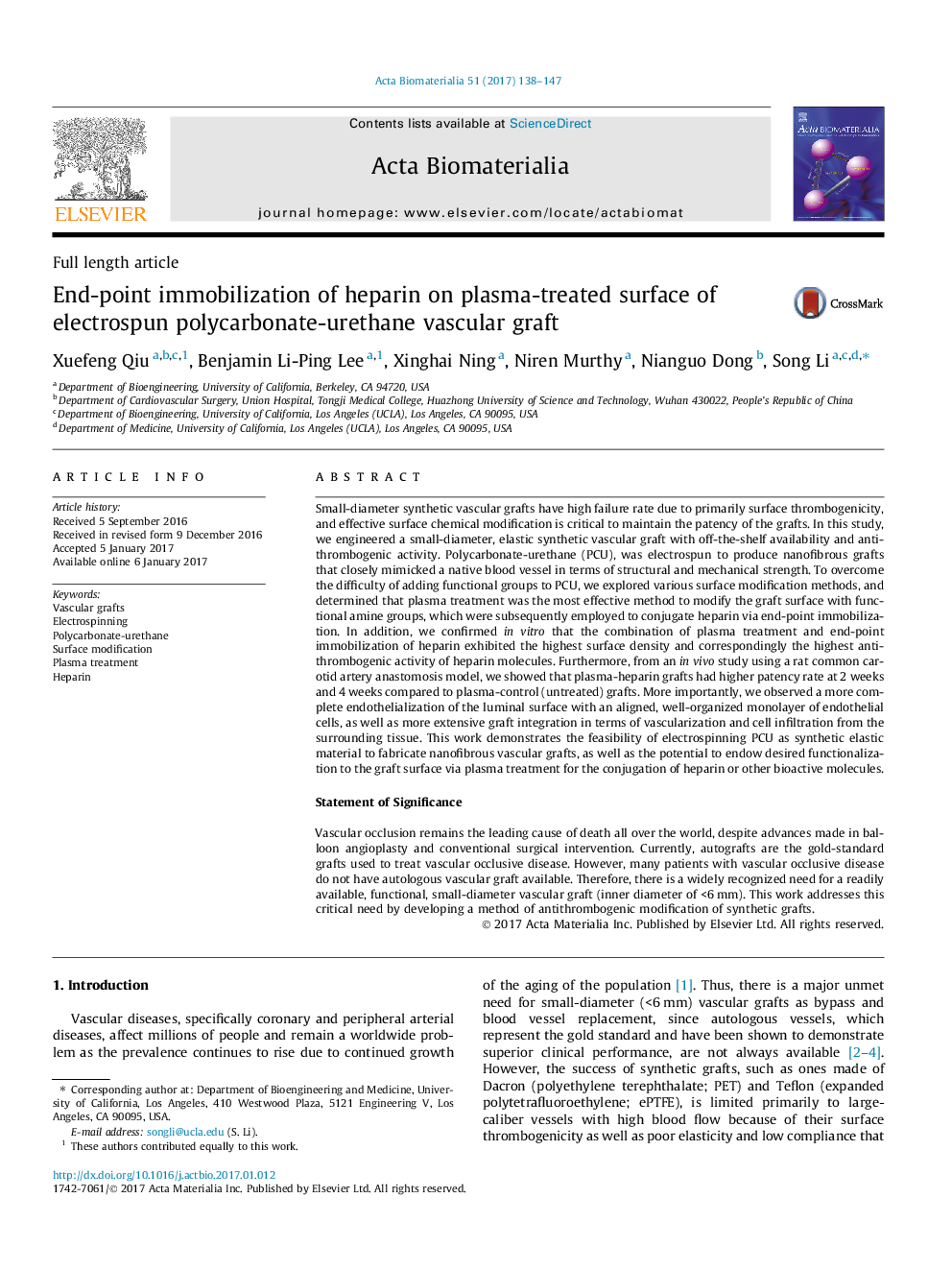| کد مقاله | کد نشریه | سال انتشار | مقاله انگلیسی | نسخه تمام متن |
|---|---|---|---|---|
| 6449469 | 1415935 | 2017 | 10 صفحه PDF | دانلود رایگان |
Small-diameter synthetic vascular grafts have high failure rate due to primarily surface thrombogenicity, and effective surface chemical modification is critical to maintain the patency of the grafts. In this study, we engineered a small-diameter, elastic synthetic vascular graft with off-the-shelf availability and anti-thrombogenic activity. Polycarbonate-urethane (PCU), was electrospun to produce nanofibrous grafts that closely mimicked a native blood vessel in terms of structural and mechanical strength. To overcome the difficulty of adding functional groups to PCU, we explored various surface modification methods, and determined that plasma treatment was the most effective method to modify the graft surface with functional amine groups, which were subsequently employed to conjugate heparin via end-point immobilization. In addition, we confirmed in vitro that the combination of plasma treatment and end-point immobilization of heparin exhibited the highest surface density and correspondingly the highest anti-thrombogenic activity of heparin molecules. Furthermore, from an in vivo study using a rat common carotid artery anastomosis model, we showed that plasma-heparin grafts had higher patency rate at 2Â weeks and 4Â weeks compared to plasma-control (untreated) grafts. More importantly, we observed a more complete endothelialization of the luminal surface with an aligned, well-organized monolayer of endothelial cells, as well as more extensive graft integration in terms of vascularization and cell infiltration from the surrounding tissue. This work demonstrates the feasibility of electrospinning PCU as synthetic elastic material to fabricate nanofibrous vascular grafts, as well as the potential to endow desired functionalization to the graft surface via plasma treatment for the conjugation of heparin or other bioactive molecules.Statement of SignificanceVascular occlusion remains the leading cause of death all over the world, despite advances made in balloon angioplasty and conventional surgical intervention. Currently, autografts are the gold-standard grafts used to treat vascular occlusive disease. However, many patients with vascular occlusive disease do not have autologous vascular graft available. Therefore, there is a widely recognized need for a readily available, functional, small-diameter vascular graft (inner diameter of <6Â mm). This work addresses this critical need by developing a method of antithrombogenic modification of synthetic grafts.
166
Journal: Acta Biomaterialia - Volume 51, 15 March 2017, Pages 138-147
